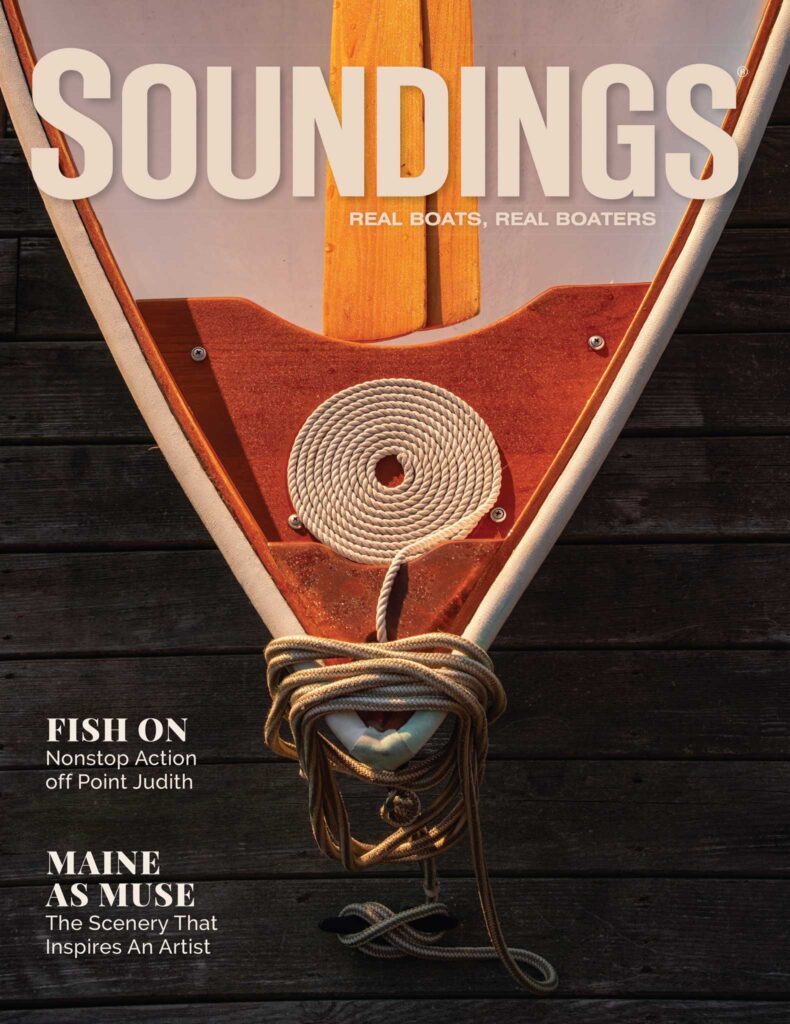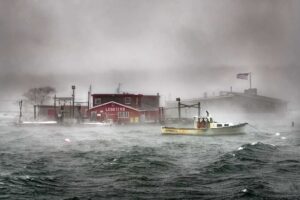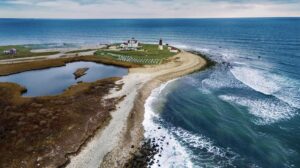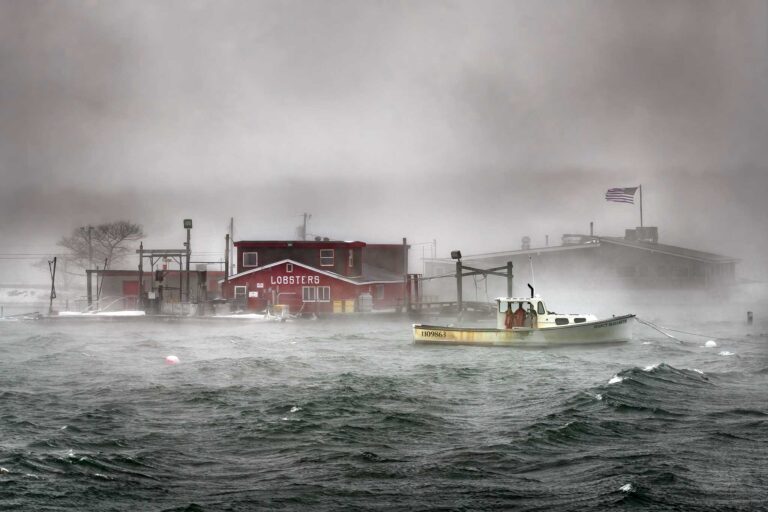A squall. Two figures in a small boat. The mainsail is blown, the little craft scudding before the wind. Using a subtle gray-tone palette and an uncanny feel for the sea and its elements — wind, wave and weather — Winslow Homer created a story, a drama. Here is the moment when the sea gets the upper hand; the sailors are in trouble. It’s a feeling anyone who has been caught out can relate to.

Few could depict the marine world better than Homer (1836-1910), considered one of America’s greatest Impressionist artists. His coastal views — painted around his Prout’s Neck, Maine, studio late in life — are perhaps his best-known works. But Homer worked prolifically over a lifetime, and his paintings also included such subjects as the Civil War, women at leisure and children at play.
Blown Away, a 10-by-19-inch watercolor and graphite composition on paper, is impressionistic, but there’s a realism that comes through — the struggle of the sailors against nature, the force of the sea. As N.C. Wyeth, a great artist and illustrator in his own right, put it: Homer painted the sea “the way it really looked.” Few understood the sea as Homer did. He was a constant observer of the world around him, which philosopher Henri Bergson said gave him a unique empathy for his subject. Noted one critic: “He has lived with the ocean so long, grown in communion with it and paid unconscious homage to it that the spirit of the ocean has entered into him and his utterance of what he feels is spontaneous.”
To Homer, art was simple. If a man wants to be an artist, he must never look at pictures; he should look at the coast. “You must wait, and wait patiently, until the exceptional, the wonderful effect or aspect comes,” he said. “Then, if you have sense enough to see it — well, that is all there is to that.”
This article originally appeared in the May 2016 issue.










